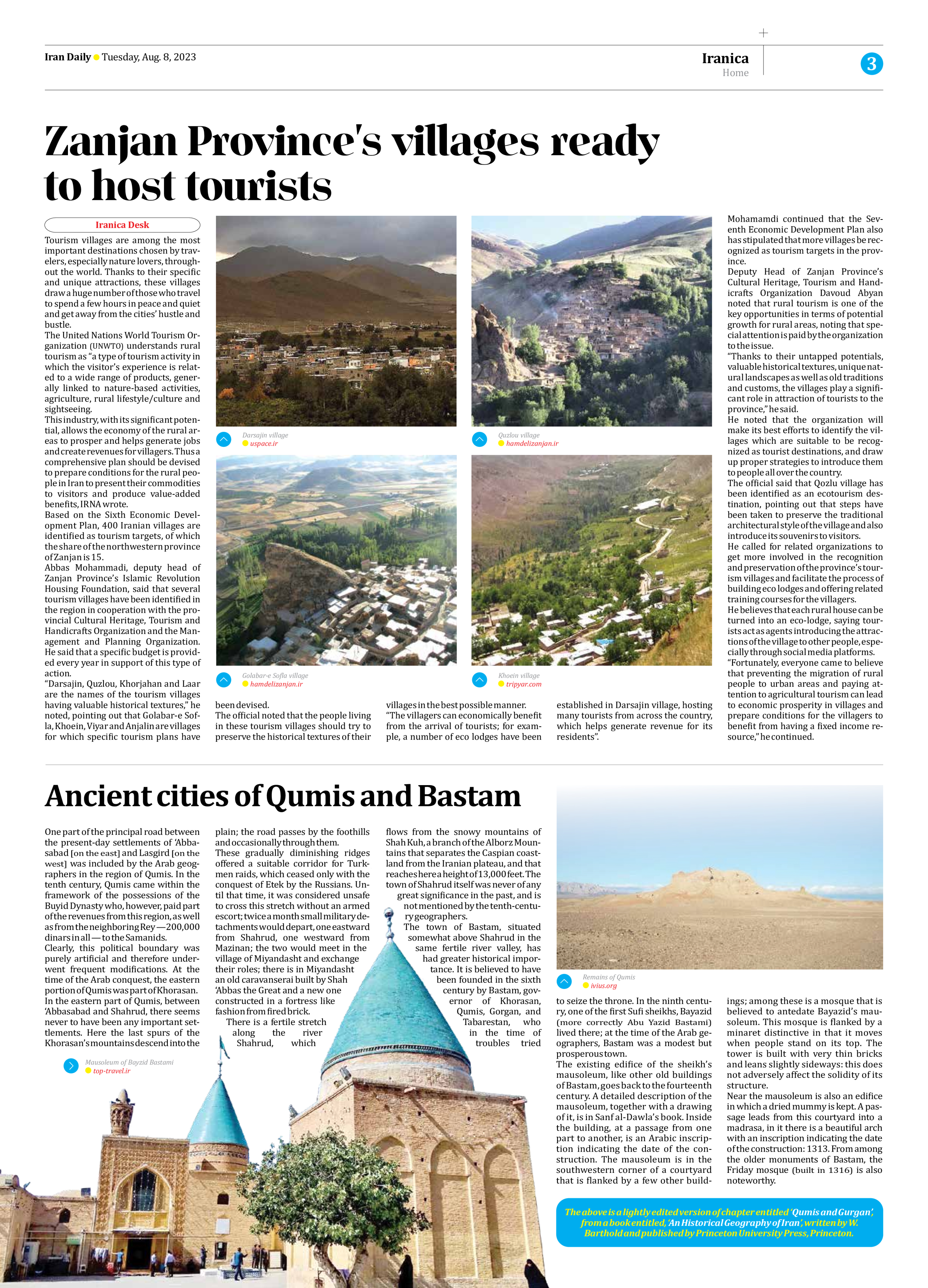
Ancient cities of Qumis and Bastam
One part of the principal road between the present-day settlements of ‘Abbasabad [on the east] and Lasgird [on the west] was included by the Arab geographers in the region of Qumis. In the tenth century, Qumis came within the framework of the possessions of the Buyid Dynasty who, however, paid part of the revenues from this region, as well as from the neighboring Rey —200,000 dinars in all — to the Samanids.
Clearly, this political boundary was purely artificial and therefore underwent frequent modifications. At the time of the Arab conquest, the eastern portion of Qumis was part of Khorasan.
In the eastern part of Qumis, between ‘Abbasabad and Shahrud, there seems never to have been any important settlements. Here the last spurs of the Khorasan’s mountains descend into the plain; the road passes by the foothills and occasionally through them.
These gradually diminishing ridges offered a suitable corridor for Turkmen raids, which ceased only with the conquest of Etek by the Russians. Until that time, it was considered unsafe to cross this stretch without an armed escort; twice a month small military detachments would depart, one eastward from Shahrud, one westward from Mazinan; the two would meet in the village of Miyandasht and exchange their roles; there is in Miyandasht an old caravanserai built by Shah ‘Abbas the Great and a new one constructed in a fortress like fashion from fired brick.
There is a fertile stretch along the river Shahrud, which flows from the snowy mountains of Shah Kuh, a branch of the Alborz Mountains that separates the Caspian coastland from the Iranian plateau, and that reaches here a height of 13,000 feet. The town of Shahrud itself was never of any great significance in the past, and is not mentioned by the tenth-century geographers.
The town of Bastam, situated somewhat above Shahrud in the same fertile river valley, has had greater historical importance. It is believed to have been founded in the sixth century by Bastam, governor of Khorasan, Qumis, Gorgan, and Tabarestan, who in the time of troubles tried to seize the throne. In the ninth century, one of the first Sufi sheikhs, Bayazid (more correctly Abu Yazid Bastami) lived there; at the time of the Arab geographers, Bastam was a modest but prosperous town.
The existing edifice of the sheikh’s mausoleum, like other old buildings of Bastam, goes back to the fourteenth century. A detailed description of the mausoleum, together with a drawing of it, is in Sanf al-Dawla’s book. Inside the building, at a passage from one part to another, is an Arabic inscription indicating the date of the construction. The mausoleum is in the southwestern corner of a courtyard that is flanked by a few other buildings; among these is a mosque that is believed to antedate Bayazid’s mausoleum. This mosque is flanked by a minaret distinctive in that it moves when people stand on its top. The tower is built with very thin bricks and leans slightly sideways: this does not adversely affect the solidity of its structure.
Near the mausoleum is also an edifice in which a dried mummy is kept. A passage leads from this courtyard into a madrasa, in it there is a beautiful arch with an inscription indicating the date of the construction: 1313. From among the older monuments of Bastam, the Friday mosque (built in 1316) is also noteworthy.
The above is a lightly edited version of chapter entitled ‘Qumis and Gurgan’, from a book entitled, ‘An Historical Geography of Iran’, written by W. Barthold and published by Princeton University Press, Princeton.







